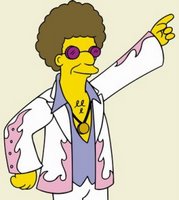Who invented disco?
 As with many pop culture phenomenons, it's difficult to credit one specific person with creating disco. This musical style started in the early 1970s, primarily in New York City underground nightclubs. The DJs in these clubs played a mix of funk, soul, and R&B music that the crowds loved to dance to. As the scene grew, musicians and DJs experimented with different sounds and mixes. Faster, funkier music that kept the audience dancing became very popular, and eventually the style spread to other big cities in the U.S. and Europe. Disco peaked in the mid '70s and died out at the end of the decade.
As with many pop culture phenomenons, it's difficult to credit one specific person with creating disco. This musical style started in the early 1970s, primarily in New York City underground nightclubs. The DJs in these clubs played a mix of funk, soul, and R&B music that the crowds loved to dance to. As the scene grew, musicians and DJs experimented with different sounds and mixes. Faster, funkier music that kept the audience dancing became very popular, and eventually the style spread to other big cities in the U.S. and Europe. Disco peaked in the mid '70s and died out at the end of the decade.A key development in creating disco seems to be longer song length. Typical radio pop songs were (and still are) about three minutes in length. Nightclub DJs noticed how one great song could keep people happy on the dance floor and wanted to extend this experience as long as possible.
Early disco artists were influenced by the ten-minute song "Sex Machine," by soul legend James Brown in 1970. The first disco hits include "Love's Theme" from Love Unlimited Orchestra, "Your Song" written by Elton John and performed by Billy Paul, and "Love Train" by the O'Jays, which were popular in 1972 and 1973.
The first major media discussions of disco were in Rolling Stone and Billboard magazines in 1973. These articles probably didn't coin the term, but they did bring national attention to the rising trend.
Mix master Tom Moulton made two huge contributions to the burgeoning disco scene. In 1974, for Gloria Gaynor's first album, Never Can Say Goodbye, Moulton mixed a medley of three songs into a dance mix that lasted the whole length of one album side.
Then, in 1975, Moulton worked with recording engineer José Rodriguez to invent the 12" single -- a vinyl record as big as a long-playing album, but with only one, long, remixed song on it. Moulton distributed the new singles as promotional items for nightclub DJs, and the 12" caught on fast. The next year, the first commercial 12" single was released, and the disco era exploded around the U.S. and the world.
Receive post updates by Email



























 Add my feed to your Rss
Add my feed to your Rss
